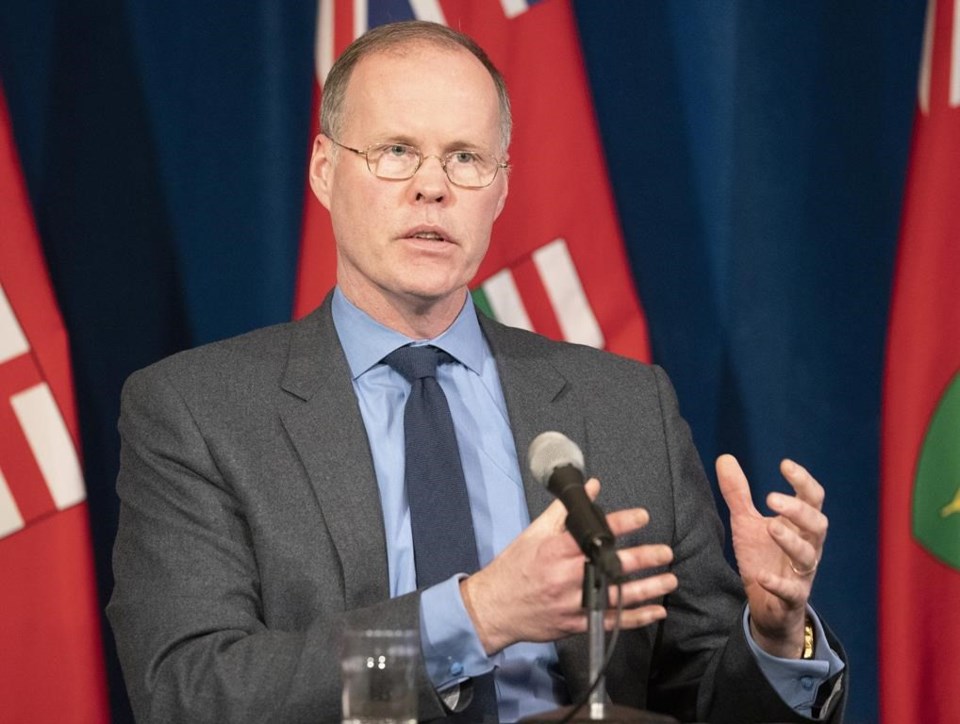TORONTO — Ontario's hospitals face increasing strain due to the COVID-19 pandemic even as the province sees tentative improvements in case counts, health officials suggested Thursday in releasing new data on the state of the second wave.
The rate of infection and the number of new daily cases appear to be flattening but it's too soon to tell whether the province has turned a corner, health officials said, noting things could quickly take another turn for the worse.
"While it's positive to see these indicators like cases are starting to flatten, it is best described as a fragile or precarious situation where we need to make sure that cases continue to flatten and decline before we can say that we're making strong progress," said Dr. Adalsteinn Brown, one of the experts behind the report.
In the meantime, the number of hospitalizations related to the novel coronavirus rose more than 63 per cent over the last four weeks, and the number of patients in intensive care units recently passed the threshold where surgeries may need to be cancelled, the new data show.
The report released Thursday shows more than 150 intensive care beds are currently filled, with that number likely to hit 200 next month and remain there for some time.
Deaths in long-term care homes are also rising, with 64 reported in the last seven days, even though the number of cases among staff and residents appears to be flattening, the document shows.
Many new cases in hot spot regions cannot be traced to a specific source, a metric Brown called a "critical measure of public health capacity."
The report shows 70 per cent of new cases in Toronto, and 27 per cent of cases in Peel Region and Ottawa, cannot be linked to a source, while 20 per cent of York Region's new daily infections have no known epidemiological link.
Thursday marked the first time new projections have been released since the province sent Toronto and Peel into lockdown earlier this week.
The province's top doctor said the new data show the added restrictions are having an impact, but cautioned it's too early to say how much.
"Is it enough to drive us firmly down the other side of the slope of a second wave? ...We're not sure yet," said Dr. David Williams, whose term as chief medical officer of health has been extended by six months.
"We're not as bad as we were, but we're not out of the woods yet," he said.
Brown noted people who live in neighbourhoods with denser and more crowded housing and a higher proportion of essential service workers, such as some areas of Toronto and Peel Region, face greater risk of infection.
"These are long-standing structural factors here... that drive these much higher rates of infection," and "one-size-fits-all" public health interventions are unlikely to help, though tailored community action has shown some success, Brown said.
The previous modelling, released two weeks ago, showed Ontario could see as many as 6,500 new daily cases of COVID-19 by mid-December unless steps were taken to limit the spread of the virus.
It said the province would reach 2,500 new daily cases by that time if the growth rate was at three per cent, or 6,500 if the growth rate was at five per cent.
The projections issued Thursday show that if the province maintains its current growth rate of zero to one per cent, the case counts by the end of December will likely be similar to those recorded now.
However, if the growth rate returns to what it was two weeks ago, new daily infections could surpass 9,000, the document shows.
Ontario reported 1,478 new cases of COVID-19 on Thursday, and 21 more deaths related to the virus.
Health Minister Christine Elliott said 572 of those cases were in Peel Region, and 356 are in Toronto.
The province reported that 556 people are currently hospitalized with COVID-19 in the province, an increase of 33 since Wednesday.
Critics pointed to Thursday's projections as proof the government was too slow to impose tougher restrictions.
"Doug Ford lifted public health measures too soon, and now we’re in a position where ICUs will be so full for weeks to come that delays to surgeries will be unavoidable," the NDP said in a statement.
"Lockdowns aren’t going to be enough to stop the spread in hot spots if people can’t self-isolate or take paid sick days."
Earlier Thursday, the federal government announced $6.5 million in funding for Peel Region to provide a safe place for residents to self-isolate on a voluntary basis.
The region's medical officer of health, Dr. Lawrence Loh, said the funding will be received over 16 months, starting Dec. 1.
The Ontario government also announced it is starting voluntary COVID-19 testing for asymptomatic students, faculty and staff in regions with high rates of transmission.
The expanded testing will be provided for four weeks in schools in Toronto, Peel and York regions, and Ottawa. Those who show symptoms or have been exposed to a COVID-19 case should continue to stay home and get tested at an assessment centre, the province said.
The province first announced the program this summer but it had not yet taken effect.
This report by The Canadian Press was first published Nov. 26, 2020.
Paola Loriggio, The Canadian Press

